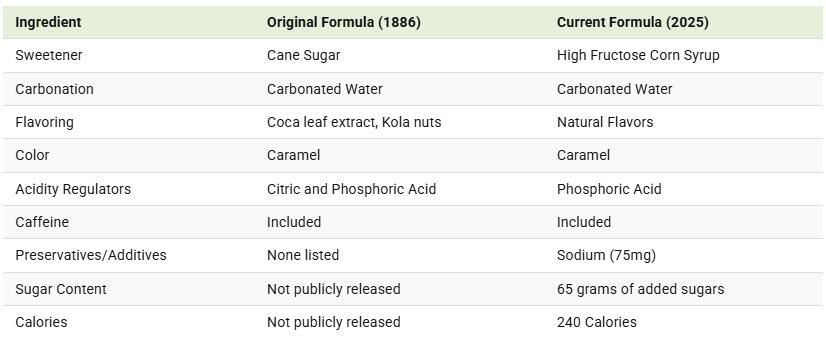
Breaking News
 Trump Announces MASSIVE Social Security Cleanup -- 275,000 Illegal Aliens Removed...
Trump Announces MASSIVE Social Security Cleanup -- 275,000 Illegal Aliens Removed...
 BOMBSHELL: Kash Patel Uncovers Obama Deputy AG Sally Yates' Email Ordering FBI Agents...
BOMBSHELL: Kash Patel Uncovers Obama Deputy AG Sally Yates' Email Ordering FBI Agents...
 China Unveils World's First Pregnancy-Simulating Humanoid Robot
China Unveils World's First Pregnancy-Simulating Humanoid Robot
 How Coca-Cola's Secret Formula Has Changed Over Time
How Coca-Cola's Secret Formula Has Changed Over Time
Top Tech News
 1,000 miles: EV range world record demolished ... by a pickup truck
1,000 miles: EV range world record demolished ... by a pickup truck
 Fermented Stevia Extract Kills Pancreatic Cancer Cells In Lab Tests
Fermented Stevia Extract Kills Pancreatic Cancer Cells In Lab Tests
 3D printing set to slash nuclear plant build times & costs
3D printing set to slash nuclear plant build times & costs
 You can design the wheels for NASA's next moon vehicle with the 'Rock and Roll Challenge
You can design the wheels for NASA's next moon vehicle with the 'Rock and Roll Challenge
 'Robot skin' beats human reflexes, transforms grip with fabric-powered touch
'Robot skin' beats human reflexes, transforms grip with fabric-powered touch
 World's first nuclear fusion plant being built in US to power Microsoft data centers
World's first nuclear fusion plant being built in US to power Microsoft data centers
 The mitochondria are more than just the "powerhouse of the cell" – they initiate immune...
The mitochondria are more than just the "powerhouse of the cell" – they initiate immune...
 Historic Aviation Engine Advance to Unlock Hypersonic Mach 10 Planes
Historic Aviation Engine Advance to Unlock Hypersonic Mach 10 Planes
 OpenAI CEO Sam Altman Pitches Eyeball-Scanning World ID to Bankers
OpenAI CEO Sam Altman Pitches Eyeball-Scanning World ID to Bankers
 New 3D-printed titanium alloy is stronger and cheaper than ever before
New 3D-printed titanium alloy is stronger and cheaper than ever before
How Coca-Cola's Secret Formula Has Changed Over Time

In the following chart, Visual Capitalist's Bruno Venditti pairs a quick dataset with context on how ingredients and nutrition have evolved.
From Coca to "Decocainized" Coca
Early formulas included coca leaf extract, and small amounts of cocaine remained until the early 1900s.
By 1903, the drug was removed amid changing laws and public health concerns. Coca-leaf flavoring persisted in "decocainized" form, prepared under license in the U.S. by a facility now operated by Stepan Company. These shifts preserved the brand's flavor profile while complying with evolving regulation.
The Big Sweetener Switch
In the U.S., Coca-Cola transitioned from cane sugar to high-fructose corn syrup (HFCS) during the 1980s, with reporting in 1984 noting the move across major soda brands.
Cost and supply dynamics favored corn syrup at the time. Not every market followed: in the U.K., for instance, Coca-Cola Original lists "sugar" rather than HFCS. This split explains why "Mexican Coke" tastes different to some consumers.
"I have been speaking to Coca-Cola about using real cane sugar in Coke in the United States, and they have agreed to do so… It's just better!"
U.S. Coke has six standard ingredients: carbonated water, HFCS, caramel color, phosphoric acid, natural flavors, and caffeine. A 20 fl oz (591 mL) bottle has ~240 calories, ~65 g added sugar, and ~75 mg sodium, though labels can vary. Because the 1886 recipe is proprietary and not publicly released, a direct comparison isn't possible.
Following Trump's push, Coca-Cola has announced it will launch a new product sweetened with U.S.-produced cane sugar next fall.




